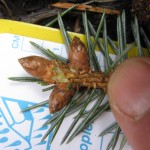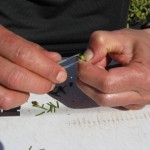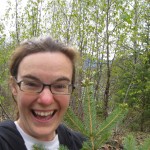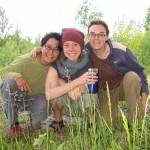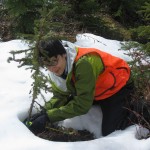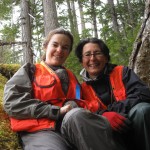The year got off to a flying start in the Aitken lab, with a Forest Ecology and Management publication from our own Colin Mahony and his collaborators. Basically, if everyone else’s year started on a rocket, it’d better be running on clean energy. Following on his recent Global Change Biology publication, Colin shows us that human induced climate change is no joke to our beloved BC forests, and the future might be more grim than previously anticipated by forest managers. Colin shows that novel climates, climates that are currently not experienced anywhere in BC, might arise in BC by mid-century, and that these unprecedented conditions may fall under the radar with the current use of the BEC projection model.
At the moment, the best way to decide what forest tree species to plant where is to project ourselves forward about 50 years (about the time it takes for forestry trees to become fully mature) and determine what climate will be occurring then in the area of interest. Tree species and provenances can then be selected from BC areas with the closest contemporary climate. This is all done through the BEC system, which groups BC climatic conditions in an ecologically meaningful set of units.
The crucial question is: what if there is no place in BC that matches the predicted future climate of an area? Should we expand our range to all of North America? Well, Colin et al. actually show that some mid-century novel climates of BC have no equivalent in other parts of North America either…
These results highlight the limitations of the BEC projection model: 2 of the measures of the method, analog similarity and ensemble agreement, are actually diagnostic of novel climates at high values. In other words, projections of future BEC climates can be erroneous in novel climates, in particular by creating an appearance of reduced climate disruption and uncertainty. In providing a map of where novel climates are likely, this research points to regions where BEC projections are reliable from areas where other analytical approaches are required.
Here’s what lab members reading the paper had to say about it:
What’s our takeaway from this paper?
We don’t know what we think we know about future climate/ecology predictions in lowlands, coastal regions, and NE BC, because the climates there are unlike all others in North America. Forest management practices should rely on a species-specific basis, and be adapted with new management approaches—not found in other BEC zones’ practices.
“The best match is not necessarily a good match.” Depending on the analog pool, amount of climate change, and particular decision framework you use, you may find that the best climate analog is nothing like the actual climate. If I’m picking my pants from the kids section, the biggest ones are the best fit, but I can still only get one leg in them!
What’s the coolest thing about this paper?
Standardizing changes in climate by interannual variablility is a really cool way of expressing their ecological relevance, and if you want to know more about this smart method, check out Mahony et al. 2017. Also, despite the uncertainties in predicting the future of ecosystems under climate change, this study presents a fine-scale adjustment on what was known and on what was expected for British Columbian forests under climate change. The provided information will be key to reducing the risks of resource losses in the province.
Figures 2 and 3 are such awesome figures. They clearly and concisely explain a concept that can be difficult to get your head around.
What question are we left with after reading this paper?
What would the scenario of novel climates be on a global scale using the same approach?
What management methods should we use in areas where novel climates are predicted to occur?
Is Colin’s middle name Reginald? Rudolphus? Royce? An enduring mystery…
I didn’t really understand the pros and cons of the linear novelty detection method vs random forests on first read and was pretty confused trying to interpret the random forests figures. I’d love to see a talk breaking down the random forests method and results in isolation. Or maybe I should just read the supplementary material?
Reading climate novelty papers like this makes me want a tool that lets me plug in coordinates, a year and an emissions scenario and get a map of climate analogs and their associated ecosystems.

